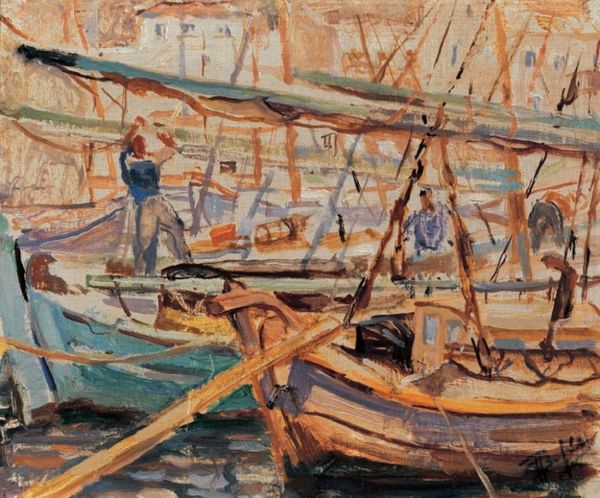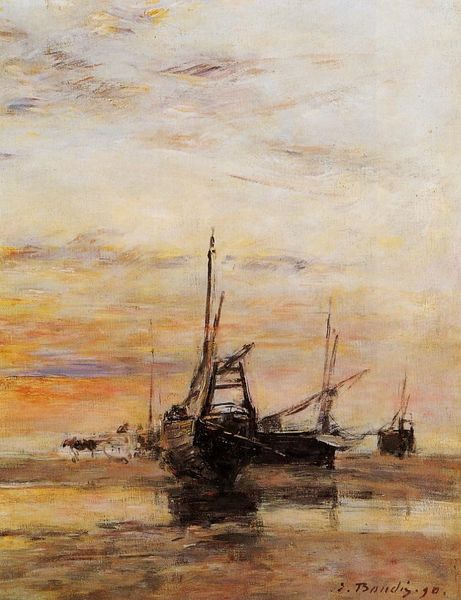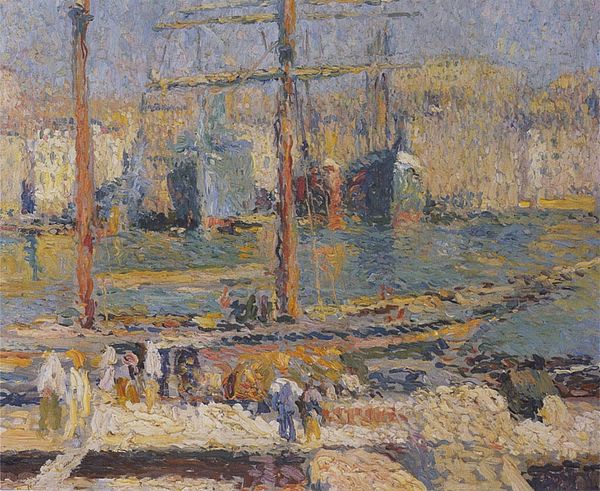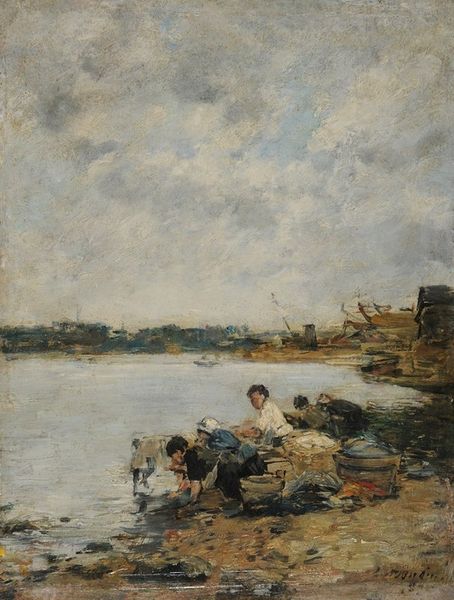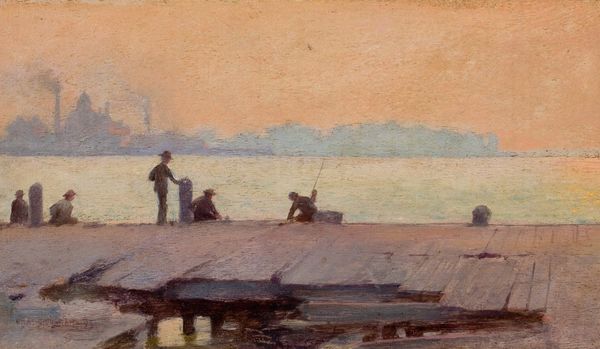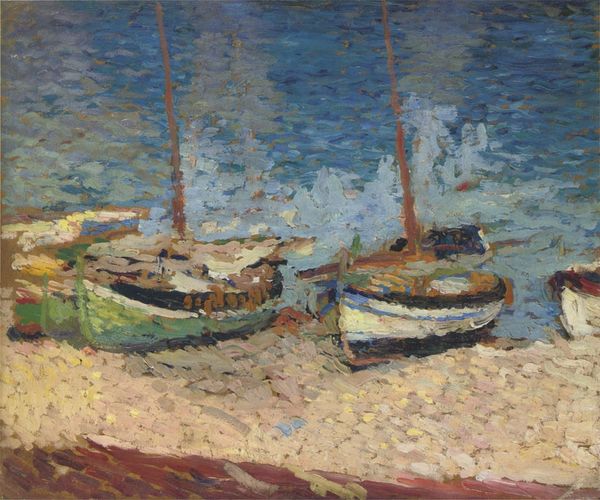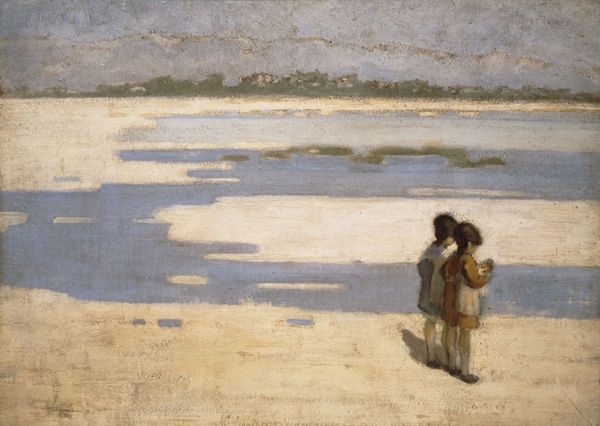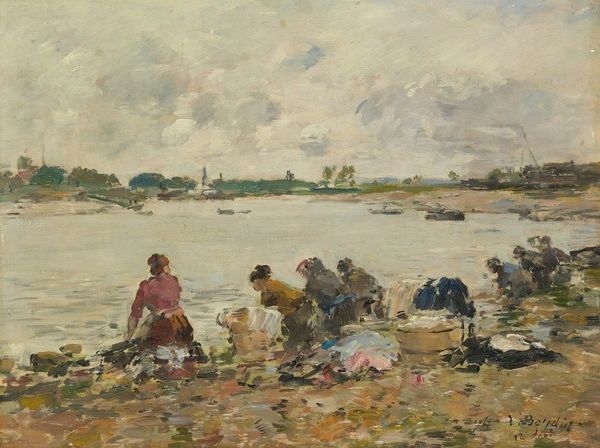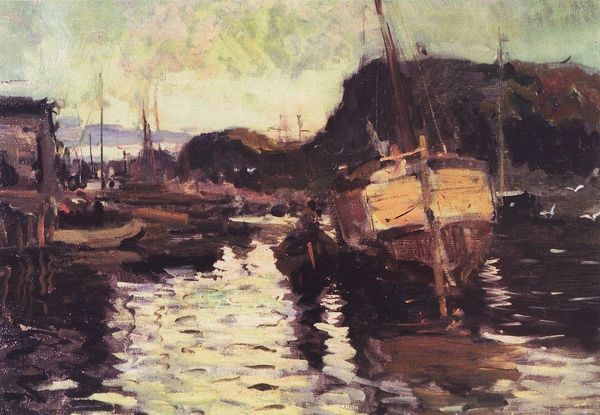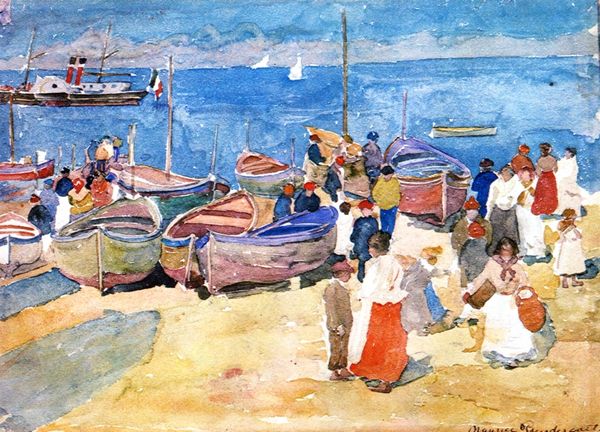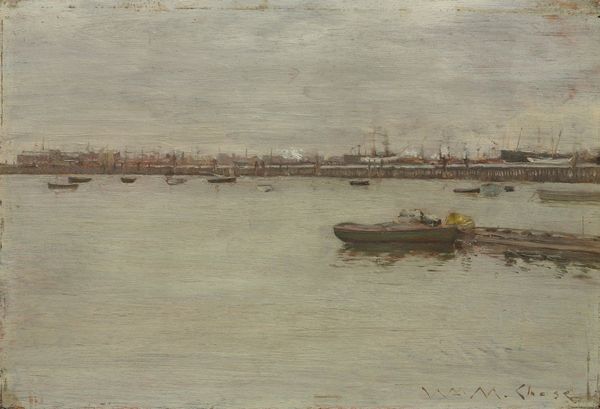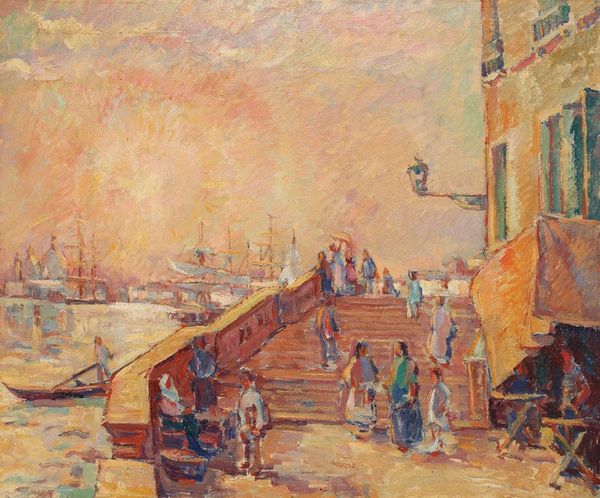
Copyright: Public domain
Curator: Childe Hassam's 1896 oil on canvas, titled "Fishing," presents us with a seemingly tranquil riverside scene. What strikes you immediately? Editor: There's a muted quality to it. The colours are subdued, almost melancholic. You feel the grit of the embankment, the dullness of the day reflected in the water. It has a somber industrial feel despite the people engaging in leisure. Curator: Hassam painted this during a pivotal time in American art, when artists were grappling with the implications of industrialization and urbanization. These elements greatly influenced art. He spent time in Europe with the Impressionists, a predominantly white cis-male dominated movement and later integrated impressionistic brushstrokes into distinctly American scenes. We must remember that "American" art often neglects the presence of anyone beyond white, middle-class subjects. What perspectives are lost in these representations? Editor: Absolutely. Thinking about it materially, I’m curious about the pigment choices. The earth tones dominate, hinting at the materials readily available, the minerals extracted, perhaps locally at the time? How does this connect to the industrial labor defining cityscapes? The very materiality speaks to place. Curator: The Impressionists’ use of fleeting light also must be recontextualized. We can consider the subjects in this piece – two possibly working-class figures fishing by the river. Do you believe this is necessarily leisure for them, or potentially survival? Is there space for escapism amid factory labour, wage exploitation, the pervasive reality for working people? Editor: It's a critical point. Consider also the actual act of painting. Hassam’s rapid, loose brushstrokes, these aren’t accidental; they capture a specific moment. It reflects not only impressionistic style, but the speed of a society transformed by production, a stark contrast with slower artisanal practices. The paintings' material production reflects a shift in social values and ways of living and working. Curator: Ultimately, understanding "Fishing" compels us to question narratives surrounding industrialization and representation within American Impressionism, prompting reflections on identity, class, and the gaze behind the art. Editor: For me, "Fishing" becomes a textural embodiment of a shifting landscape – a moment caught in brushstrokes that still holds critical resonances today.
Comments
No comments
Be the first to comment and join the conversation on the ultimate creative platform.
